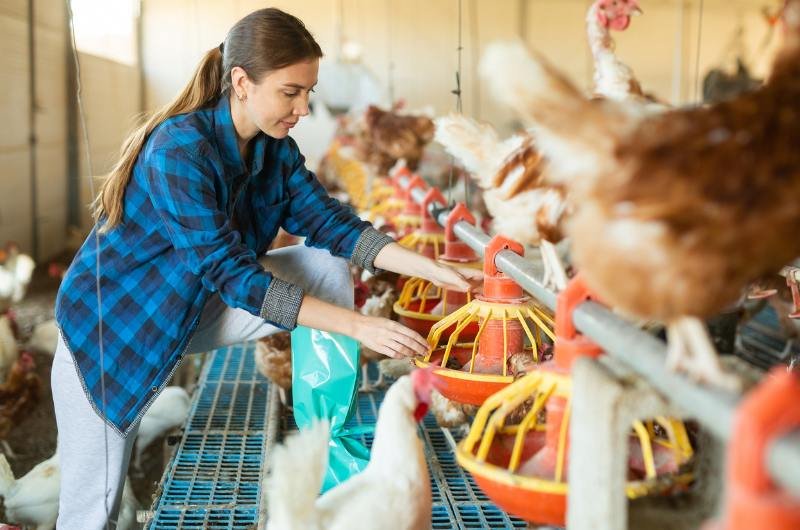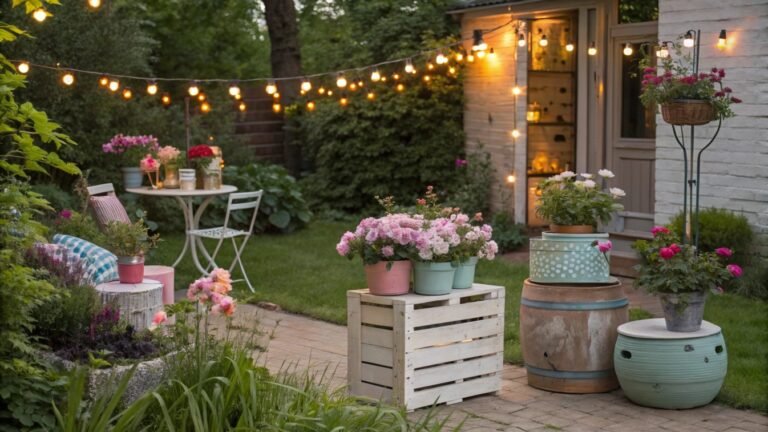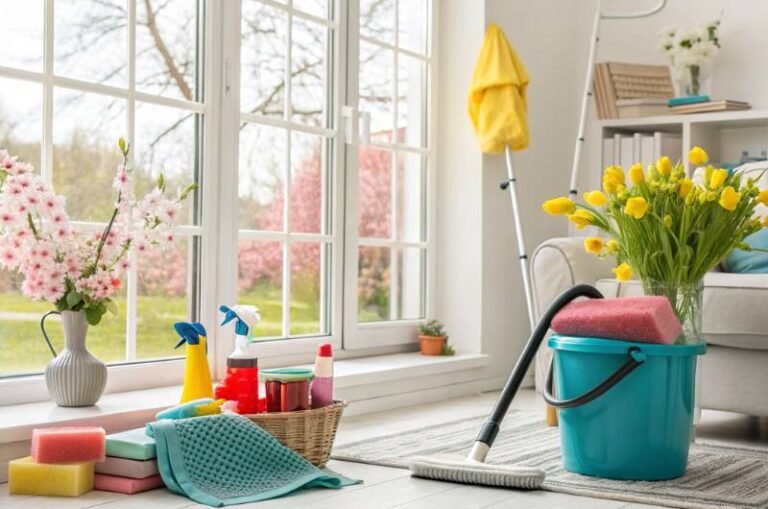15 Homestead Skills to Make You More Self-Reliant
Imagine waking up to the sound of chickens softly clucking outside, the smell of fresh bread baking in the oven, and the satisfaction of knowing that the food on your table came straight from your own hard work. Sounds dreamy, right?
Homesteading isn’t just for folks with acres of land—it’s a mindset, a lifestyle, and a way to embrace self-sufficiency no matter where you live. Whether you’re in a tiny apartment dreaming of an herb garden or on a big country property raising livestock, these homestead skills will help you live a little more sustainably and resourcefully.
Let’s dive into some essential homestead skills that will not only save you money but also reconnect you with the joy of simple living.
1. Growing Your Own Food
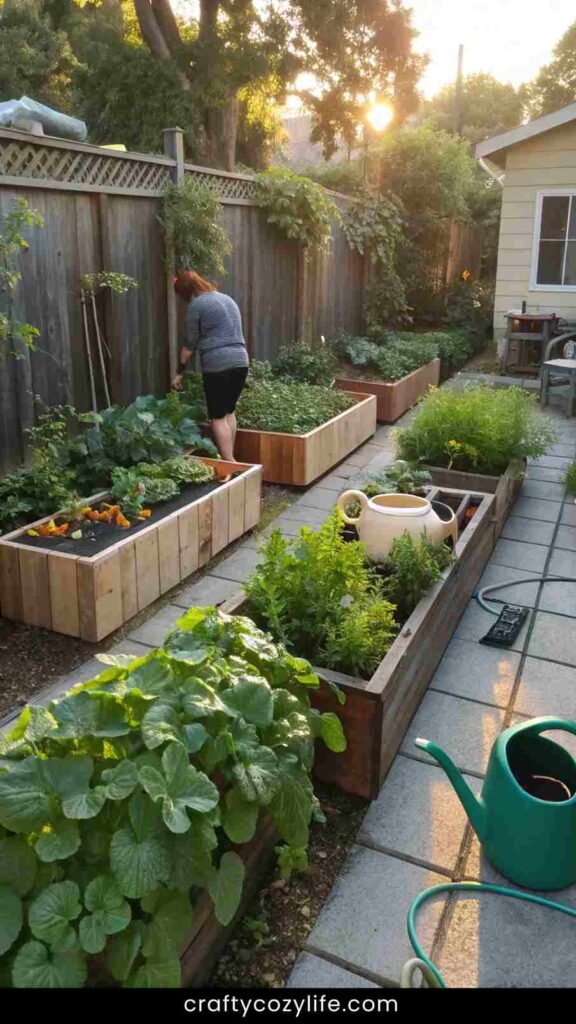
There’s something so satisfying about biting into a fresh tomato still warm from the sun, knowing you grew it yourself. Gardening is a core homestead skill that can be done anywhere, from backyard plots to balcony containers.
How to Get Started:
- Choose the right space – If you have a yard, start with a raised bed or two. No yard? A sunny windowsill or a set of pots on your patio will do just fine.
- Pick beginner-friendly plants – Tomatoes, lettuce, radishes, and herbs (like basil and mint) are great for first-timers.
- Learn soil & composting basics – Healthy soil means healthy plants! Mix compost into your dirt or start a simple compost bin for nutrient-rich soil.
- Water & tend daily – A little love goes a long way. Water your plants regularly, prune when needed, and keep an eye out for pests.
Picture This:
A tiny backyard transformed into a lush green oasis, bursting with fresh cucumbers, carrots, and fragrant herbs. A morning ritual of stepping outside, basket in hand, plucking fresh produce for the day’s meals—homestead bliss at its finest.
2. Preserving Food for the Future
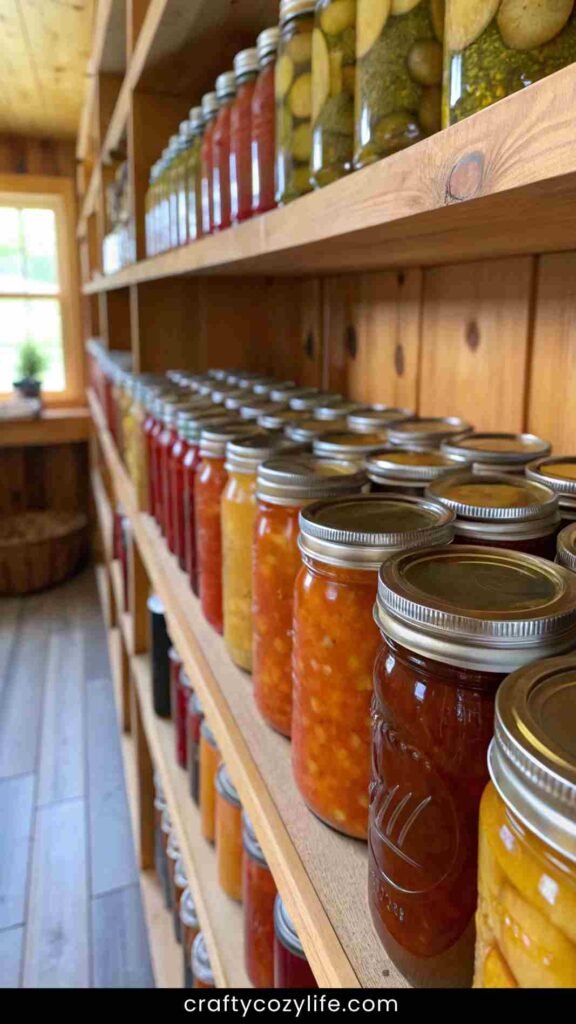
What’s the point of growing all that delicious food if you can’t enjoy it year-round? Learning to preserve food is a homestead game-changer, ensuring you have homegrown goodness even in the dead of winter.
How to Get Started:
- Canning – Water-bath canning is great for jams and pickles, while pressure canning works for low-acid foods like beans and meat.
- Dehydrating – Use an oven, dehydrator, or even the sun to dry herbs, fruits, and veggies for easy storage.
- Freezing – Flash-freeze berries and vegetables on a baking sheet before storing them in freezer bags to prevent clumping.
- Fermenting – Try making homemade sauerkraut, kimchi, or yogurt for probiotic-rich foods with long shelf lives.
Picture This:
Rows of colorful mason jars lining a farmhouse-style pantry—golden peach preserves, ruby-red tomato sauce, crunchy dill pickles. Each jar holds the taste of summer, ready to brighten up a winter’s day.
3. Baking Homemade Bread
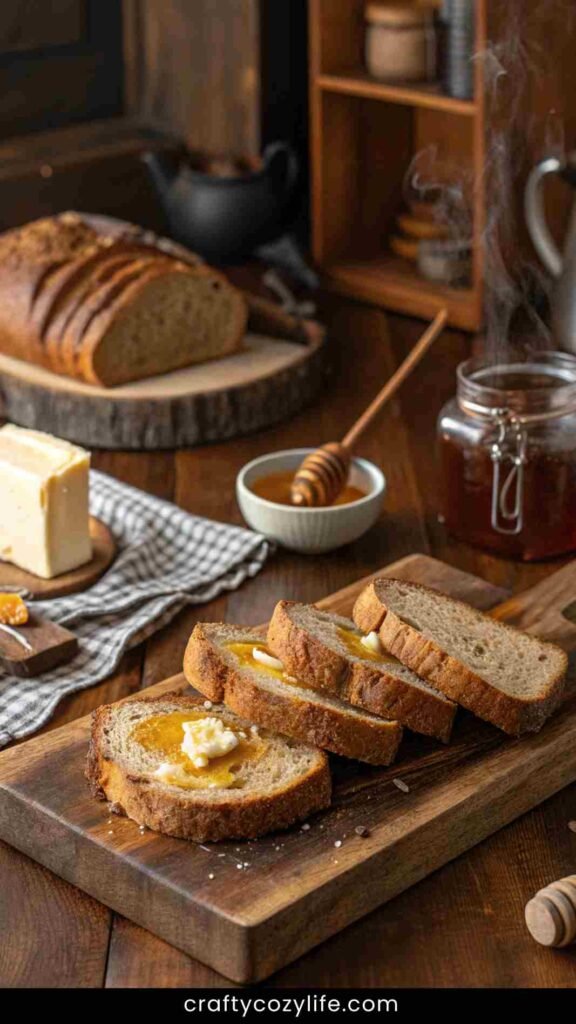
Nothing beats the smell of fresh-baked bread wafting through your kitchen. Plus, making your own bread is cheaper, healthier, and way more satisfying than store-bought.
How to Get Started:
- Start with an easy recipe – A simple no-knead bread or classic farmhouse loaf is perfect for beginners.
- Gather basic ingredients – Flour, water, salt, and yeast (or a sourdough starter if you’re feeling adventurous).
- Let it rise – Good things take time. Give your dough the patience it needs to rise properly.
- Bake & enjoy – Pop it in the oven, let it get golden brown, and prepare for the most delicious homemade treat ever.
Picture This:
A rustic wooden table, warm slices of crusty bread topped with homemade butter and a drizzle of honey. The comforting aroma lingers in the air, making the kitchen the heart of the home.
4. Raising Chickens for Fresh Eggs
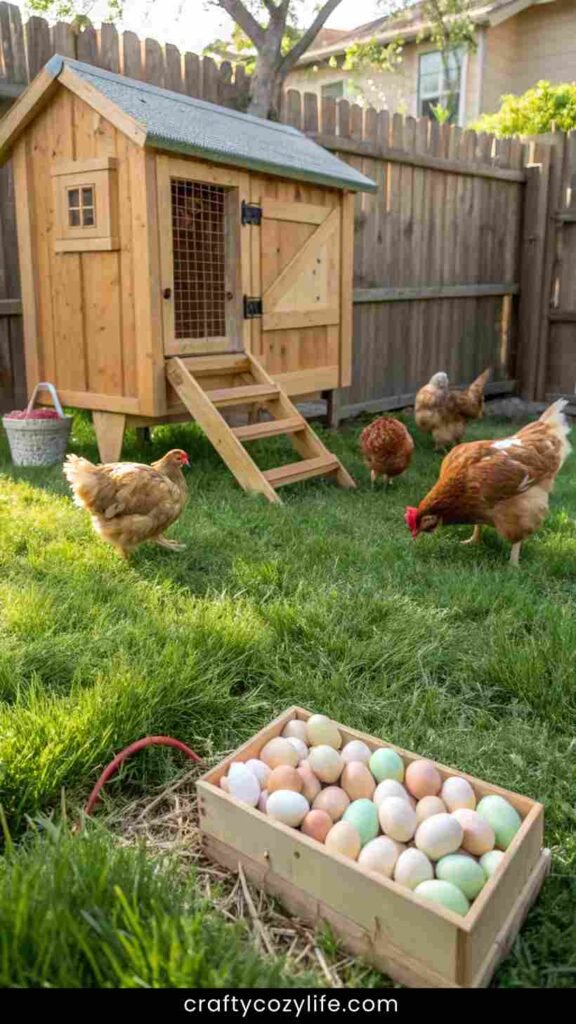
If you’ve ever dreamed of collecting fresh eggs in the morning, backyard chickens might be for you! They’re surprisingly easy to care for and provide an endless supply of fresh eggs.
How to Get Started:
- Check local regulations – Some urban areas allow hens but not roosters.
- Choose beginner-friendly breeds – Buff Orpingtons, Rhode Island Reds, and Australorps are great for first-time chicken keepers.
- Build a safe coop – Chickens need a sturdy, predator-proof home with a roosting area and nesting boxes.
- Feed & care daily – Provide fresh food, water, and plenty of love. Happy chickens lay the best eggs!
Picture This:
A charming backyard coop with fluffy hens clucking happily, pecking at the grass. You gather a warm, pastel-colored egg right from the nesting box, feeling a deep sense of satisfaction with your little slice of farm life.
5. Learning Basic Sewing & Mending
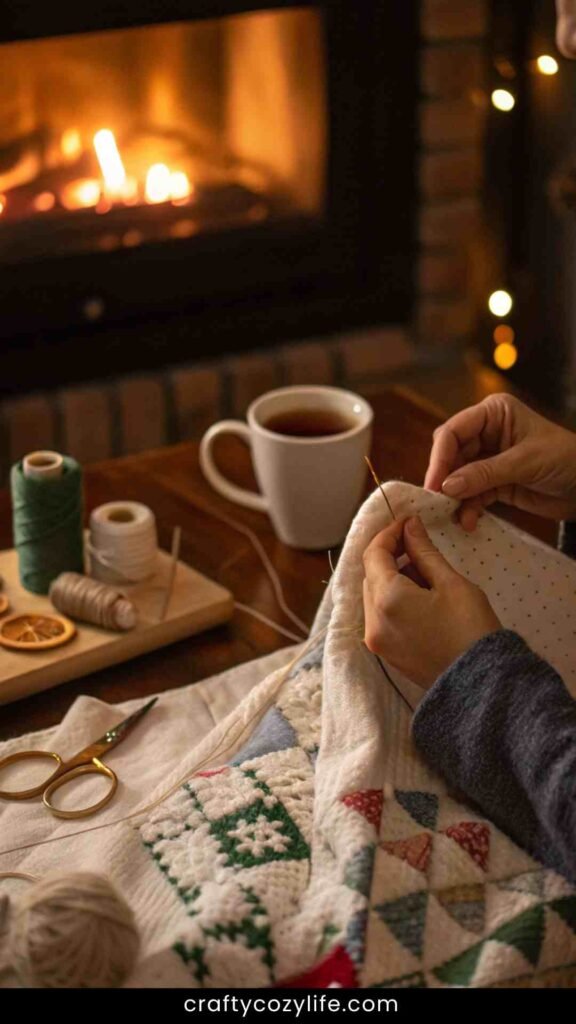
Ever ripped a favorite shirt or lost a button on a cozy sweater? Instead of tossing it, why not mend it? Sewing is a timeless homestead skill that helps reduce waste and save money.
How to Get Started:
- Learn basic stitches – Start with easy hand stitches like the running stitch or whipstitch.
- Fix simple tears & buttons – Practice mending small holes, replacing buttons, and patching up worn fabric.
- Try sewing projects – Once confident, you can make napkins, aprons, or even simple skirts.
Picture This:
A cozy evening by the fireplace, a steaming cup of tea nearby, as you stitch up a favorite quilt or craft a homemade linen napkin. The feeling of creating something useful with your own hands is unmatched.
6. Making Homemade Butter
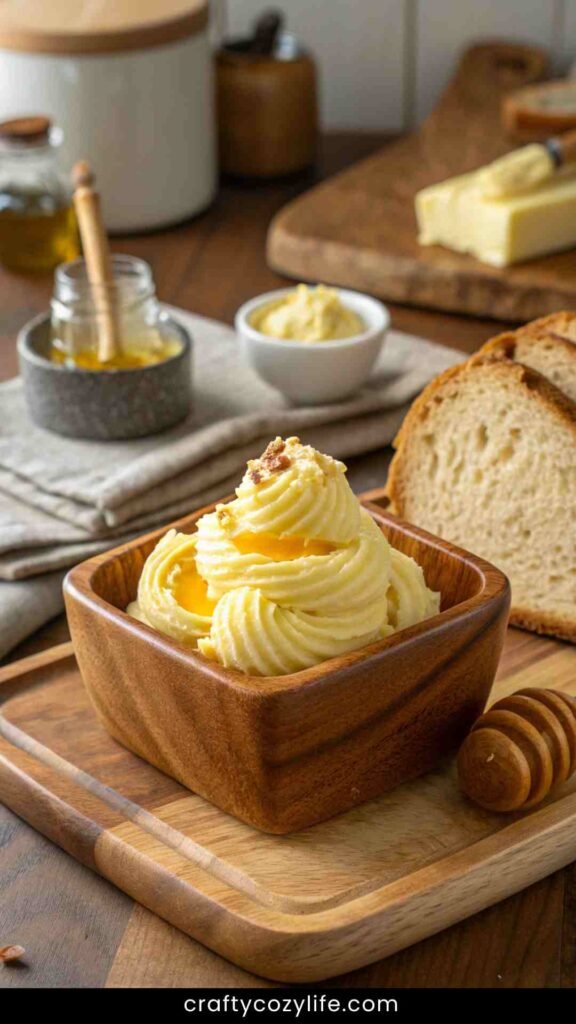
If you’ve never tasted fresh, homemade butter, you’re in for a treat. It’s rich, creamy, and incredibly easy to make—no fancy farm equipment required!
How to Get Started:
- Gather fresh cream – Heavy cream from the store works, but raw cream from a local dairy is even better.
- Shake or churn – Use a hand mixer, stand mixer, or the good old-fashioned jar-shaking method.
- Separate the buttermilk – Strain out the buttermilk (save it for pancakes!), then rinse the butter with cold water.
- Knead & season – Work out any extra moisture and mix in salt or herbs if you like.
Picture This:
A small wooden butter dish filled with golden, freshly churned butter, ready to spread onto a thick slice of homemade bread. A swirl of honey on top, and suddenly, breakfast feels like a luxury.
7. Making Natural Cleaning Products
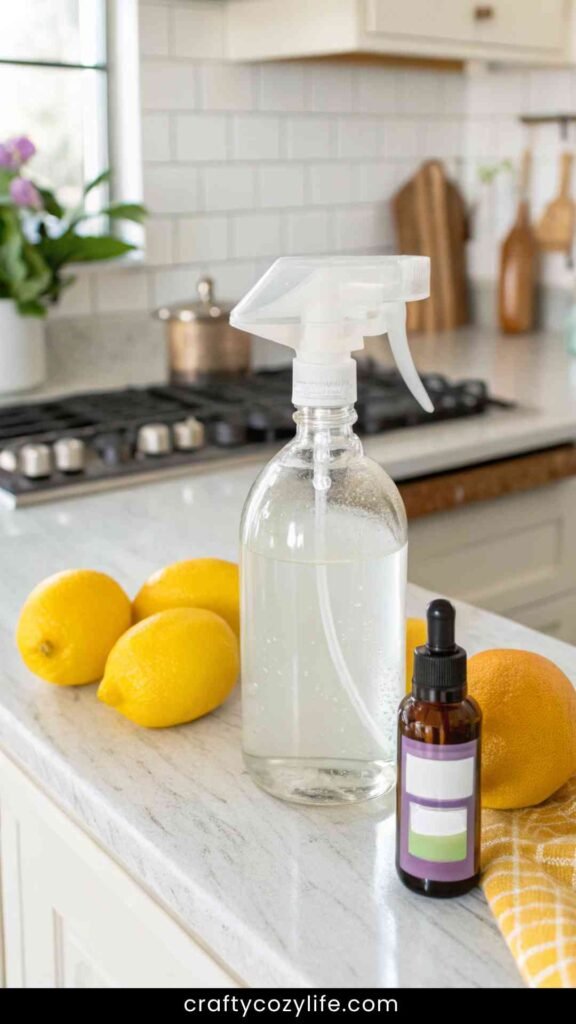
Ditch the chemicals and clean your home with simple, homemade solutions that are safe for your family and the planet.
How to Get Started:
- Stock up on basics – White vinegar, baking soda, castile soap, lemon, and essential oils are your best friends.
- Make a multi-purpose spray – Mix equal parts vinegar and water, add a few drops of lemon essential oil, and boom—your new favorite cleaner.
- Scrub with baking soda – Perfect for tackling tough stains in sinks, bathtubs, and even ovens.
- Use natural fabric softener – Add a splash of vinegar to your laundry for softer clothes without the chemicals.
Picture This:
A sparkling kitchen with the fresh scent of citrus and lavender in the air, a glass spray bottle filled with homemade cleaner on the counter—cleaning has never felt so wholesome.
8. Knitting or Crocheting
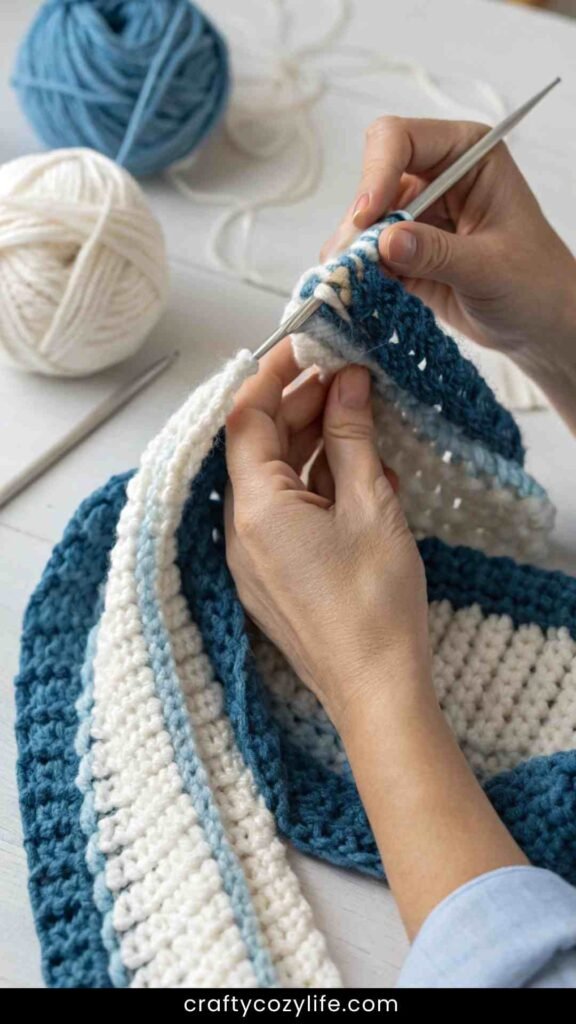
There’s something deeply satisfying about wrapping yourself in a cozy blanket or scarf that you made with your own two hands.
How to Get Started:
- Pick your craft – Knitting uses two needles; crocheting uses one hook. Both are great for beginners.
- Start small – Dishcloths, scarves, or simple blankets are perfect beginner projects.
- Learn the basics – Master a couple of basic stitches before tackling more complex patterns.
- Use natural fibers – Wool and cotton yarns are sustainable and long-lasting.
Picture This:
A cozy autumn evening, wrapped in a handmade wool blanket, a half-finished scarf on your lap as you sip on hot tea—crafting meets comfort in the best way possible.
9. Making Homemade Soap
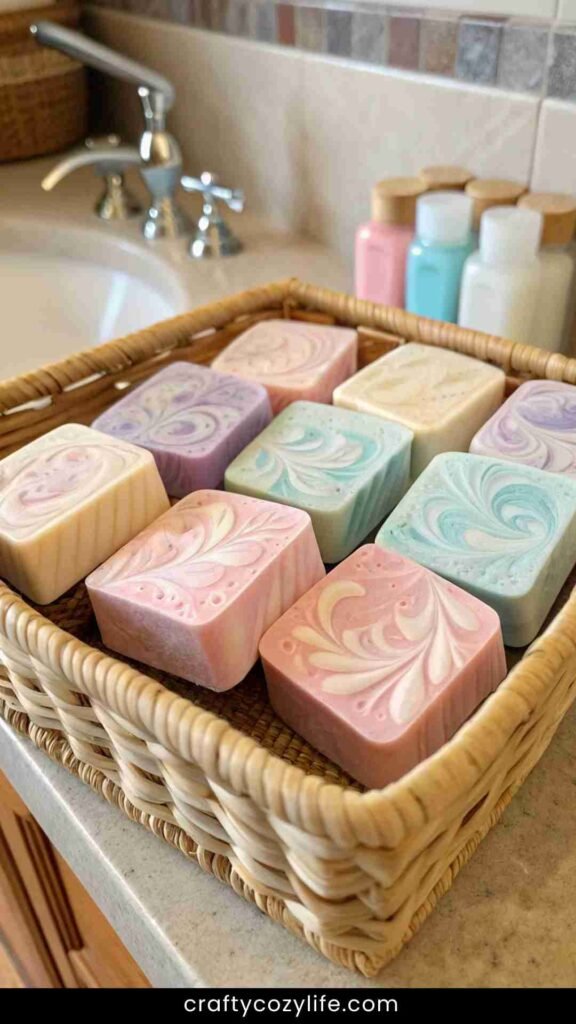
Handmade soap is a game-changer—gentle on your skin, free from harmful chemicals, and completely customizable.
How to Get Started:
- Choose a method – Cold process (traditional, requires lye) or melt-and-pour (easy beginner option).
- Gather ingredients – Oils (like coconut or olive), lye (for cold process), and essential oils for scent.
- Follow safety measures – Always wear gloves and goggles when handling lye.
- Pour & cure – Let your soap cure for 4–6 weeks before using.
Picture This:
A basket of homemade soaps in dreamy pastel colors, swirled with lavender, oatmeal, and honey, filling the bathroom with a soft, natural scent.
10. Making Beeswax Candles
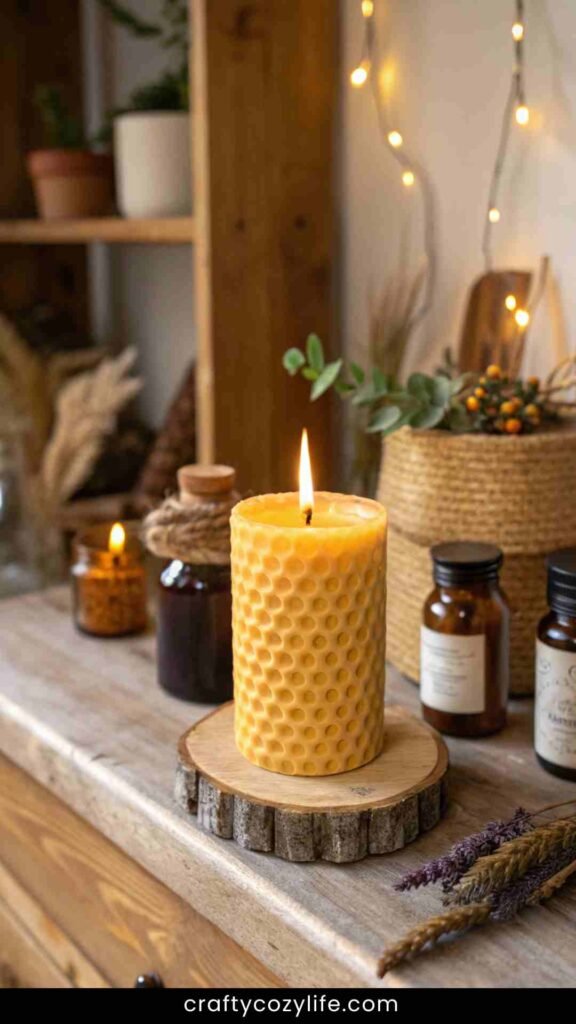
Nothing sets a cozy mood like the warm glow of a handmade beeswax candle. Plus, they’re natural, non-toxic, and smell heavenly.
How to Get Started:
- Gather supplies – Beeswax, wicks, and jars or molds.
- Melt the wax – Use a double boiler to gently heat the wax until liquid.
- Add fragrance (optional) – Essential oils like lavender or cinnamon make lovely scents.
- Pour & set – Secure the wick in place, pour the wax, and let it harden.
Picture This:
A flickering golden candle on a rustic wooden shelf, filling the room with the faint, sweet scent of honey—pure hygge vibes.
11. Hunting & Foraging for Wild Food
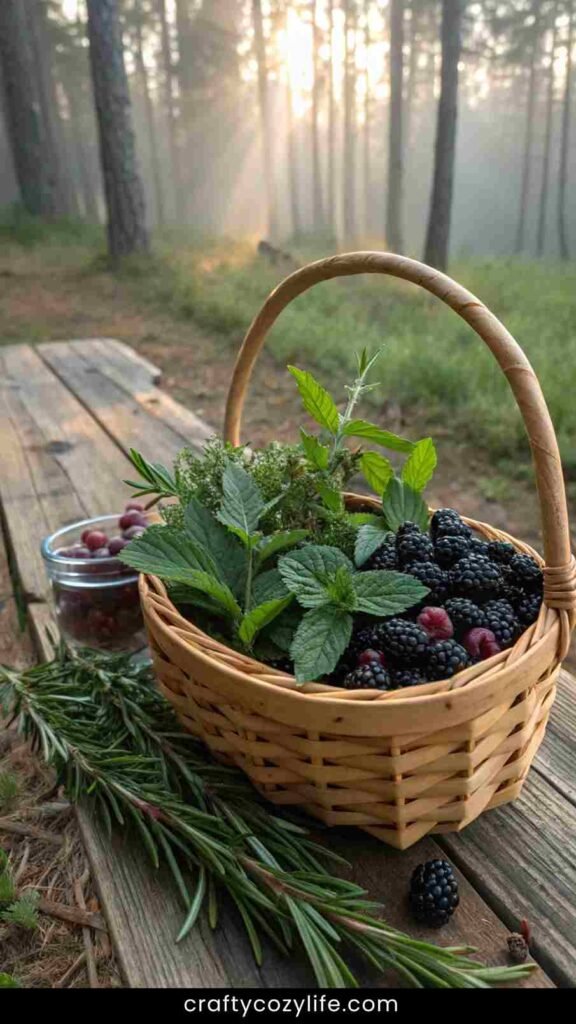
Imagine walking through the woods and spotting wild berries, mushrooms, or herbs you can actually eat. Learning how to forage safely is an incredible homestead skill.
How to Get Started:
- Learn what’s edible – Invest in a good foraging book specific to your region.
- Start simple – Berries, dandelions, and wild garlic are easy for beginners.
- Always double-check – Never eat anything unless you’re 100% sure it’s safe.
- Respect nature – Only take what you need and leave enough for wildlife.
Picture This:
A woven basket filled with freshly picked blackberries, a handful of wild mint, and a sprig of rosemary—all foraged on a peaceful morning walk through the woods.
12. Brewing Kombucha or Fermented Drinks
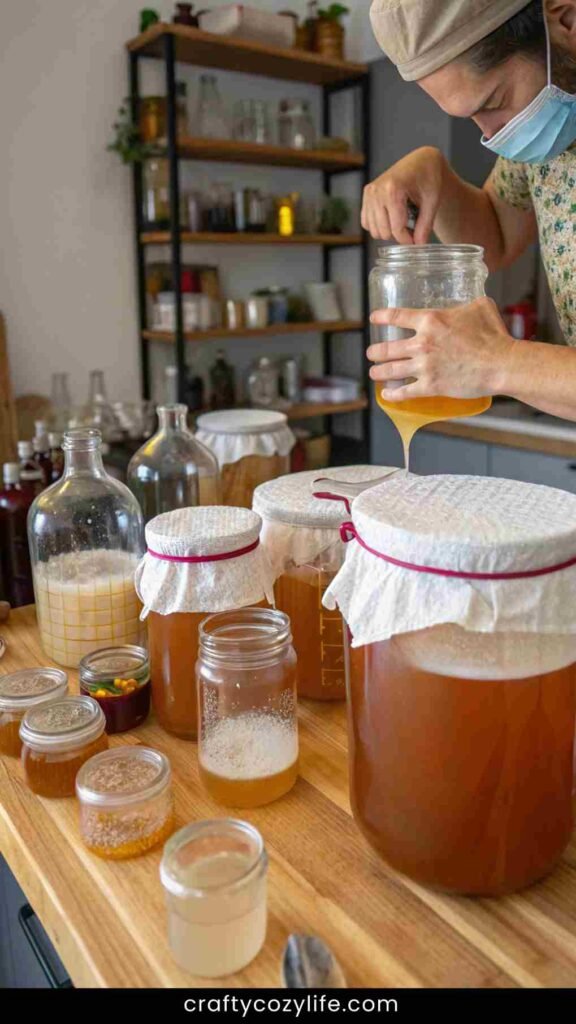
Fermented drinks like kombucha or water kefir are full of gut-friendly probiotics and surprisingly easy to make at home.
How to Get Started:
- Get a SCOBY – The kombucha starter culture (SCOBY) is essential for fermentation.
- Brew sweet tea – Black or green tea with sugar is the base for kombucha.
- Let it ferment – Cover and let it sit for 7–10 days at room temperature.
- Flavor & bottle – Add fruit or herbs for flavor, then let it carbonate in bottles.
Picture This:
A row of glass bottles on the counter, filled with fizzy, golden kombucha in flavors like raspberry ginger or lemon mint—your own homemade probiotic boost.
13. Learning Basic Carpentry
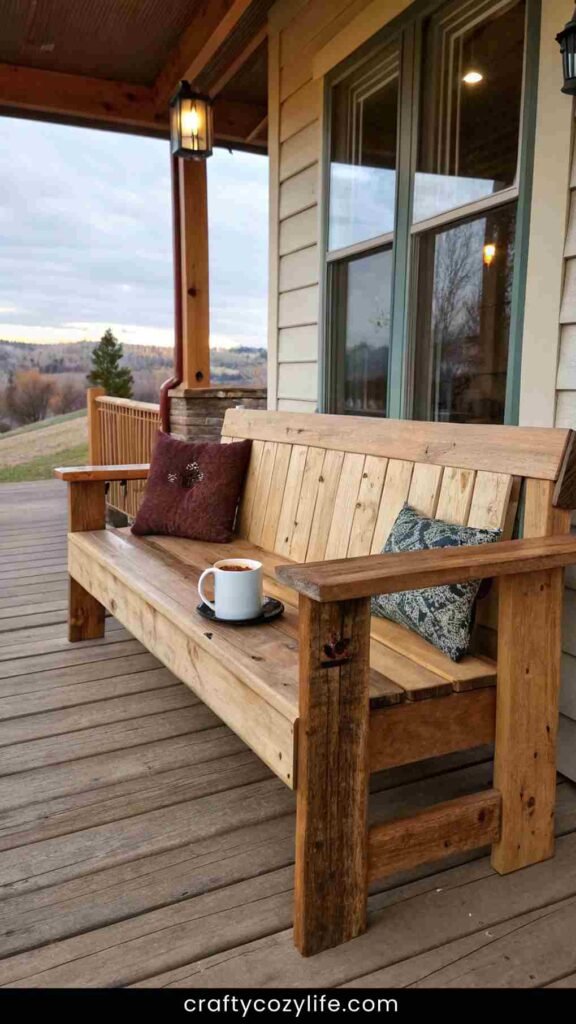
Knowing how to build simple things—like raised garden beds, shelves, or a chicken coop—can save you money and make you feel like a true homesteader.
How to Get Started:
- Invest in basic tools – A hammer, saw, drill, and measuring tape are must-haves.
- Start small – Build a simple wooden planter or spice rack before tackling bigger projects.
- Measure twice, cut once – The golden rule of woodworking!
- Use reclaimed wood – It’s sustainable and gives projects a rustic touch.
Picture This:
A handmade wooden bench sitting on the front porch, crafted with love, sanded smooth, and ready for quiet morning coffee moments.
14. Raising Bees for Honey
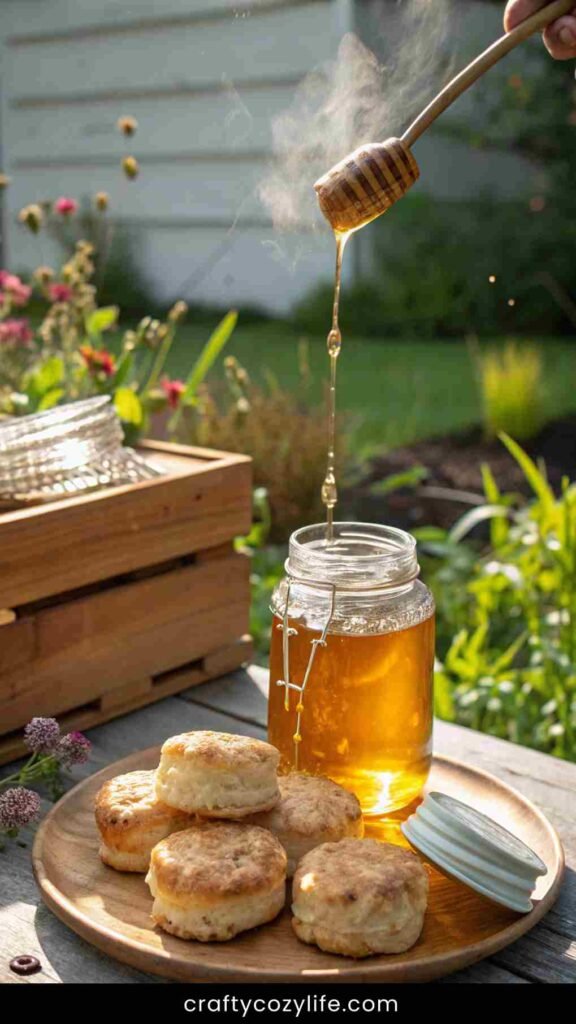
Beekeeping is a beautiful skill that provides fresh honey while helping the environment by supporting pollination.
How to Get Started:
- Learn about beekeeping – Take a beginner’s class or join a local beekeeping group.
- Get the right gear – A hive, protective suit, and smoker are essentials.
- Choose gentle bees – Italian and Carniolan bees are great for beginners.
- Harvest honey carefully – Only take what your bees can spare!
Picture This:
A golden jar of fresh honey, harvested from your own backyard hive, drizzling over warm biscuits on a slow Sunday morning.
15. Making Herbal Remedies
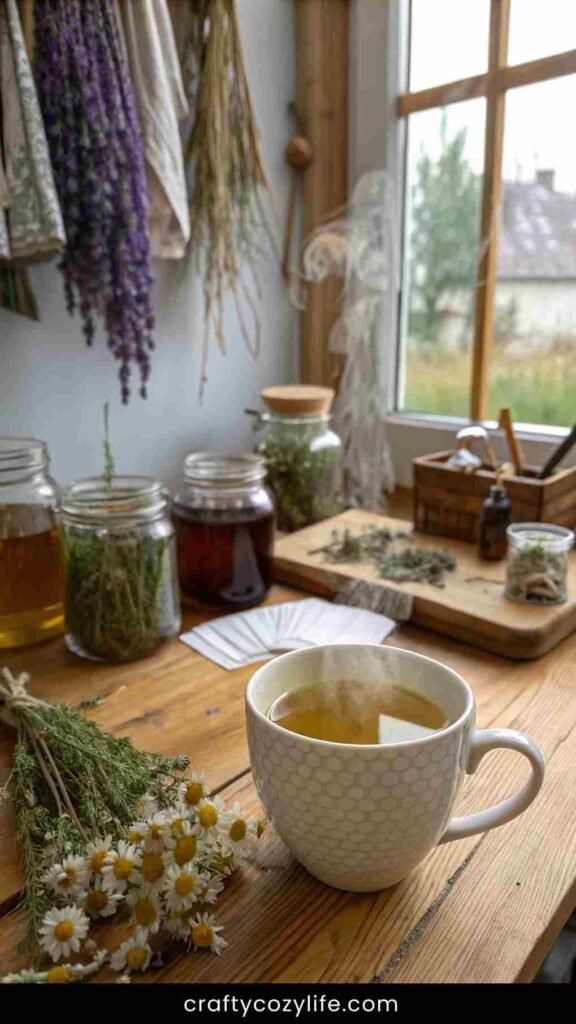
Herbal remedies have been used for centuries to soothe aches, boost immunity, and promote well-being.
How to Get Started:
- Grow healing herbs – Chamomile, lavender, peppermint, and echinacea are great starter herbs.
- Make herbal teas – Dry the leaves and steep for natural wellness support.
- Create salves & balms – Infuse herbs into oils and beeswax for homemade skin care.
- Learn from nature – Herbalism is a lifelong skill, so keep exploring!
Picture This:
A steaming cup of chamomile tea, a jar of lavender-infused oil on the windowsill, and the comforting scent of dried herbs filling the air—nature’s medicine at your fingertips.
Frequently Asked Questions
1. Do I need a lot of land to start homesteading?
Nope! Homesteading is a mindset more than a location. You can start in an apartment with container gardening, homemade cleaning products, and basic skills like baking and sewing. If you have a backyard, you can expand into gardening, chickens, and even beekeeping.
2. How much time does homesteading take?
It depends on what you want to do. Some skills, like making bread or canning, only take a few hours here and there. Raising animals or growing food takes more daily effort. Start small, and build from there!
3. What are the easiest homestead skills to start with?
Great beginner-friendly skills include:
- Growing herbs on a windowsill
- Baking homemade bread
- Making natural cleaning products
- Learning basic sewing and mending
- Preserving food by freezing or dehydrating
Once you get comfortable, you can try more advanced skills like keeping chickens or fermenting food!
4. Is homesteading expensive?
Not at all! Many homestead skills actually save you money—like growing food, making your own cleaners, and sewing instead of buying new clothes. Some things, like starting a garden or getting chickens, require an initial investment, but they pay off over time.
5. What are some good books or resources for learning homesteading skills?
Here are a few fantastic books to check out:
- The Backyard Homestead by Carleen Madigan
- The Self-Sufficient Life and How to Live It by John Seymour
- Mini Farming: Self-Sufficiency on 1/4 Acre by Brett L. Markham
YouTube is also a goldmine of homesteading tutorials, and Pinterest is packed with DIY inspiration!
6. What’s the best way to preserve food?
It depends on what you’re preserving!
- Canning – Best for jams, pickles, tomato sauce, and soups.
- Dehydrating – Great for fruits, herbs, and jerky.
- Freezing – Works well for almost anything, from vegetables to bread.
- Fermenting – Ideal for sauerkraut, kimchi, kombucha, and yogurt.
7. Can I homestead if I live in the city?
Absolutely! You can:
- Grow food in containers or a community garden
- Learn to cook from scratch
- Start a worm compost bin for food scraps
- Make homemade beauty and cleaning products
- Raise quail instead of chickens for fresh eggs
Urban homesteading is a real thing, and it’s growing in popularity!
8. How do I get started with raising chickens?
- Check local laws to see if chickens are allowed in your area.
- Pick beginner-friendly breeds like Buff Orpingtons or Rhode Island Reds.
- Build a secure coop with proper nesting boxes and roosting space.
- Feed them well with quality chicken feed and kitchen scraps.
- Enjoy fresh eggs daily! 🥚🐔
9. Is homesteading really sustainable?
Yes! Homesteading encourages self-sufficiency, reduces waste, and promotes natural living. By growing food, reducing reliance on store-bought goods, and using sustainable practices like composting and rainwater collection, homesteaders help the environment in big and small ways.
10. What’s the biggest challenge of homesteading?
Patience! Some skills take time to learn, and things don’t always go as planned (hello, failed gardens and stubborn sourdough starters). But mistakes are part of the journey. Start small, enjoy the process, and celebrate every win along the way.
Closing Thoughts
Homesteading isn’t about having acres of land or living completely off-grid—it’s about embracing a more intentional, self-sufficient lifestyle, one skill at a time. Whether you’re baking homemade bread in a tiny apartment, growing herbs on your balcony, or tending a full-fledged garden with chickens in the backyard, every step you take brings you closer to a more sustainable, fulfilling way of living.
Remember, you don’t have to do everything at once! Start with one or two skills that excite you, and let your homesteading journey unfold naturally. The beauty of this lifestyle is that it’s always evolving—there’s always something new to learn, try, and improve.
So, what’s the first homestead skill you’re going to try? Let me know—I’d love to hear about your journey! Happy homesteading, friend.
